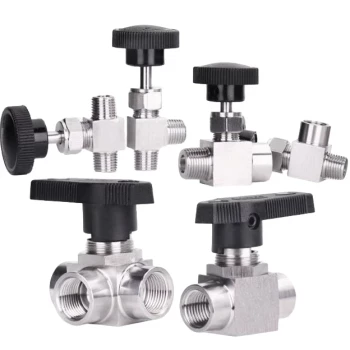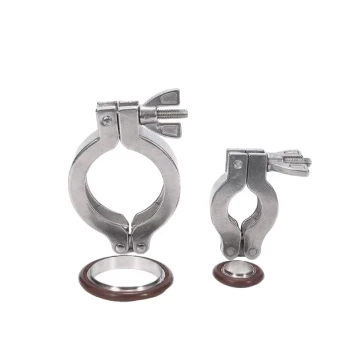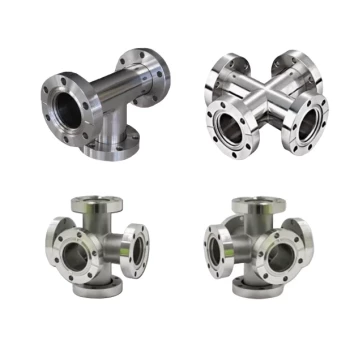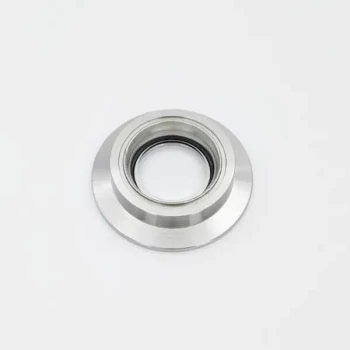To ensure optimal performance of Microwave Plasma Chemical Vapor Deposition (MPCVD) equipment, you must regularly check the entire vacuum system. The core components to inspect are the vacuum pumps for sufficient power, the vacuum gauges for accuracy, and all seals and interfaces for air leakage. The goal is to verify the system can achieve its required base pressure and maintain a stable process pressure.
A pristine vacuum environment is not merely a starting condition in MPCVD; it is an active variable that dictates the purity and quality of your final product. Your checks must therefore validate both the system's ability to achieve a deep, clean vacuum (base pressure) and its capacity to hold a precise, stable pressure while process gases are flowing.
The Two Metrics of Vacuum Integrity
An MPCVD vacuum system's health is measured against two distinct operational states. Both must be within specification for successful and repeatable deposition.
Achieving a Clean Starting Point (Base Pressure)
Before introducing any process gases, the reaction chamber must be pumped down to a low base pressure. This removes atmospheric contaminants like oxygen, nitrogen, and water vapor.
The typical target for a healthy system is a base pressure of approximately 2E-2 mbar.
Failure to reach this pressure usually points to one of two problems: a leak in the system or an underperforming vacuum pump.
Maintaining Stability During Deposition (Process Pressure)
Once the base pressure is reached, process gases are introduced. The vacuum system must then precisely maintain a much higher process pressure.
This pressure is typically held between 100 and 300 mbar (often 100-130 mbar), depending on the specific recipe.
Instability in this pressure indicates a problem with the balance between the gas inflow from the delivery system and the outflow through the vacuum pumps, or an inaccurate gauge.
Critical Component Checks
A systematic inspection routine should focus on the individual components that contribute to vacuum integrity.
The Vacuum Pumps
The pumps are the heart of the system. Check that they can consistently and quickly bring the chamber down to its target base pressure. A gradual increase in pump-down time is a clear sign of wear or a need for maintenance.
The Vacuum Gauges
Your gauges are your only window into the chamber environment. They must be checked for accuracy and calibrated regularly. A faulty gauge can lead you to run a process at an incorrect pressure, directly compromising your results.
The Exhaust System
The exhaust path is a common source of problems. It should be cleaned regularly to remove accumulated dust and deposition byproducts.
Check exhaust fans for any unusual noise or vibration, which can signal mechanical failure. Inspect all ducts and filters, cleaning them to ensure efficient flow and prevent back-streaming of contaminants into the chamber.
Understanding the Common Pitfalls
Simply reaching a target number on a gauge can be misleading. Understanding the nature of potential failures is key to true process control.
The "Small Leak" Deception
A very small leak may not prevent the system from reaching its target base pressure, especially with a powerful pump. However, it will continuously introduce contaminants like nitrogen, which is a known poison for high-quality single-crystal diamond growth.
Pump Weakness vs. System Leaks
It's critical to distinguish between a weak pump and a leak. If pump-down is slow but the chamber holds pressure well when isolated, the pump itself is likely the issue. If the pressure rapidly rises after isolation, you have a leak.
Contamination from a Clogged Exhaust
A dirty or clogged exhaust filter or duct doesn't just restrict flow; it can cause pressure instability. In severe cases, it can even become a source of particles that travel back into the chamber, contaminating your substrate.
Making the Right Choice for Your Goal
Your maintenance approach should be guided by your operational objective.
- If your primary focus is routine preventative maintenance: Perform regular cleaning of the exhaust system and a visual inspection of all chamber seals and O-rings.
- If your primary focus is troubleshooting poor deposition quality: Immediately perform a leak check and verify the system can achieve its specified base pressure.
- If your primary focus is process consistency: Implement a schedule for calibrating your vacuum gauges and log the system's pump-down time to track performance over time.
Mastering the vacuum system is fundamental to gaining complete control over your deposition process and its results.
Summary Table:
| Component | Key Checks | Purpose |
|---|---|---|
| Vacuum Pumps | Check power, pump-down time, and wear | Ensure base pressure achievement and stability |
| Vacuum Gauges | Verify accuracy and regular calibration | Monitor pressure for precise control |
| Seals and Interfaces | Inspect for air leaks and damage | Prevent contamination and maintain vacuum integrity |
| Exhaust System | Clean ducts, filters, and check fans | Avoid clogs and back-streaming of contaminants |
| Base Pressure | Target ~2E-2 mbar | Remove atmospheric contaminants before deposition |
| Process Pressure | Maintain 100-300 mbar | Ensure stable gas flow during deposition |
Maximize your MPCVD efficiency with KINTEK's advanced solutions! Leveraging exceptional R&D and in-house manufacturing, we provide diverse laboratories with high-temperature furnace systems like Muffle, Tube, Rotary, Vacuum & Atmosphere Furnaces, and CVD/PECVD Systems. Our deep customization capability ensures precise alignment with your unique experimental needs, enhancing deposition quality and process control. Contact us today to discuss how we can support your goals!
Visual Guide

Related Products
- Inclined Rotary Plasma Enhanced Chemical Deposition PECVD Tube Furnace Machine
- Custom Made Versatile CVD Tube Furnace Chemical Vapor Deposition CVD Equipment Machine
- Multi Heating Zones CVD Tube Furnace Machine for Chemical Vapor Deposition Equipment
- Split Chamber CVD Tube Furnace with Vacuum Station CVD Machine
- Slide PECVD Tube Furnace with Liquid Gasifier PECVD Machine
People Also Ask
- What is resistance heating and how is it classified? Discover the Best Method for Your Thermal Needs
- What is the role of temperature in PECVD? Optimize Film Quality and Substrate Protection
- What are the future trends in CVD technology? AI, Sustainability, and Advanced Materials
- How does chemical vapour deposition (CVD) differ from PVD? Key Differences in Thin-Film Coating Methods
- What is the difference between PVD and PECVD? Choose the Right Thin-Film Coating Technology



















